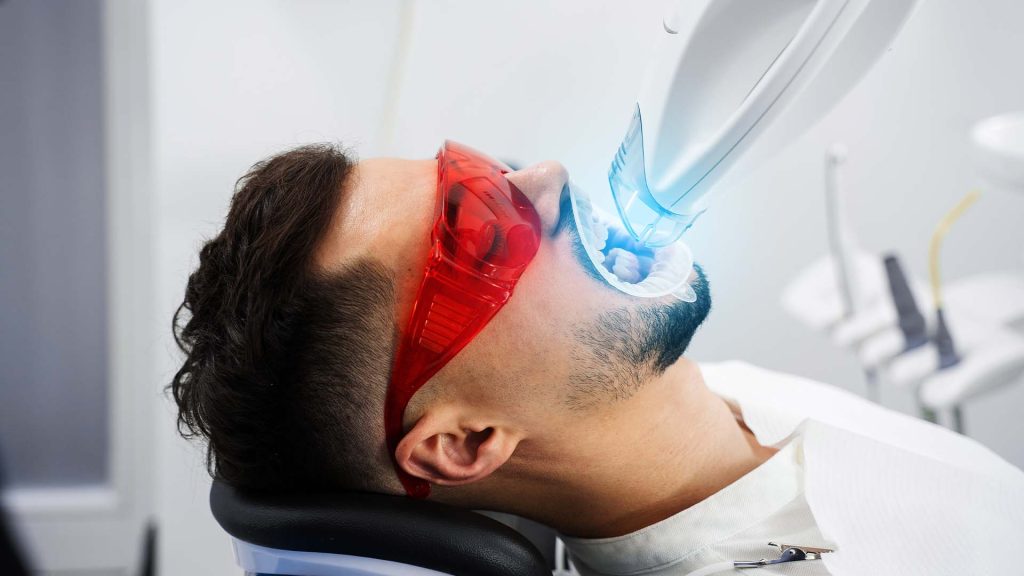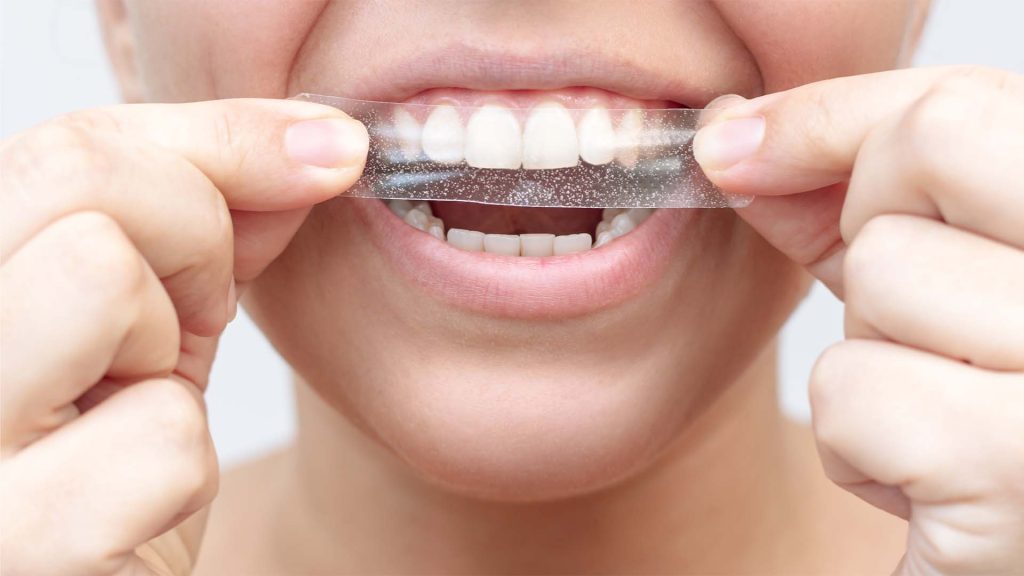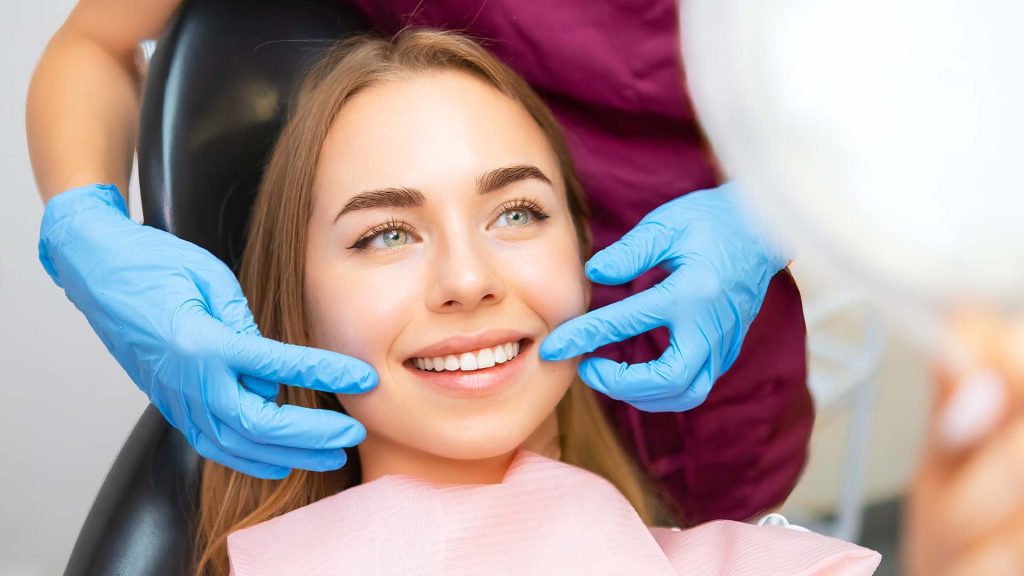In-Office Teeth Whitening vs. At-Home Kits: Pros, Cons, and Results
 Dental Treatments
Dental TreatmentsA bright smile can change the way you feel about yourself. It makes you look more confident, approachable, and leaves a positive impression on others. No wonder teeth whitening has become so popular in recent years, everyone wants that clean, radiant smile.
Today, there are two main ways to get whiter teeth: at-home teeth whitening kits or professional dental treatments done at a clinic. But which one really works better? In this blog, we’ll break down the pros and cons of each so you can decide what’s right for you. And if you’re in Dubai, Amara Aesthetic Studio offers safe, advanced in-office whitening treatments that can brighten your smile in just one visit.
What is In-Office Teeth Whitening?

In-office whitening is a professional procedure carried out by a dentist. It uses high-quality whitening gels that are stronger than anything you can buy over the counter. Since it’s done in a clinic, the treatment is carefully monitored, making it both safe and effective.
Tools and Techniques:
The process usually starts with a quick cleaning and then protecting your lips and gums so the whitening gel only touches your teeth. Once the gel is applied, the dentist may use advanced technology (such as LED or laser light) to activate it. This speeds up the whitening process and helps target deep stains caused by coffee, tea, wine, smoking, or even natural discoloration.
Duration of the Procedure:
An in-office session is quick and convenient, usually taking about 45 minutes to an hour. Many people schedule it during a lunch break or just before a big event because it doesn’t take much time out of their day.
Results You Can Expect:
The biggest advantage of in-office whitening is how fast and visible the results are. In most cases, teeth appear several shades whiter after just one visit. Unlike at-home methods, you don’t have to wait weeks to notice a difference, it’s an instant confidence boost.
What are At-Home Teeth Whitening Kits?

At-home teeth whitening kits are products to whiten your smile without going to the dentist. They are popular because they are easy to use, can be found nearly everywhere, and are much cheaper than going to the dentist. Most at-home kits use a mild bleaching solution to remove surface stains over time.
At-home whitening kits will generally not provide the same dramatic timeline as an in-office whitening procedure, but may be a good option for someone wanting to do small touch-ups or slowly improve the whiteness of their smile.
Types of Whitening Kits:
Here are the most common types of at-home whitening kits that you might see:
- Whitening Strips: Flat strips of thin plastic coated with a whitening gel that adhere to the teeth.
- Gel Fill Trays: Trays (custom or generic) that are filled with a whitening gel and worn for specific periods of time.
- Whitening Pens: Small pen-like devices with a brush end, that have gel inside and can be applied directly to tooth surfaces.
- LED Light Kits: Kits that contain gel and use an LED light and allow for the application of light to potentially speed up the possible whitening process.
How They Work:
Most of these kits rely on ingredients like hydrogen peroxide or carbamide peroxide. When used regularly, they gradually break down stains caused by coffee, tea, wine, or smoking. Since the concentration is much lower than what dentists use, the results are gentler but take longer to notice.
Duration of the Procedure:
At-home kits need consistency. Depending upon the product, regular use for one to two weeks is necessary to see visible results. The whitening may be less noticeable than in a professional whitening system, and stains can come back quicker.
Benefits:
One of the main reasons people try at-home kits is affordability. They’re easy to find at pharmacy, supermarket or online, and the cost is much less than an in-office visit. Additionally, they won’t give dramatic results, but if you’re on a budget or seeking supplemental quick fixes in-between office treatments, they are a viable option.
Key Differences Between In-Office Whitening and At-Home Kits
Both in-office whitening and at-home kits aim for the same goal – a brighter smile, but the way they work and the results you get are quite different. Here’s a side-by-side comparison – dentist teeth whitening vs home kits:
| Factor | In-Office Whitening | At-Home Whitening Kits |
| Effectiveness | Uses strong, professional-grade products that can whiten teeth by several shades in one visit. | Works gradually with lower-strength agents, giving mild to moderate results over time. |
| Speed of Results | Noticeable difference in just 45–60 minutes. | May take 1–2 weeks (or longer) of consistent use to see changes. |
| Safety | Supervised by a dentist, minimising risk to gums and enamel. | Self-applied, so there’s a higher chance of uneven application or gum irritation. |
| Longevity | Results can last several months to a year with proper care. | Results fade more quickly and may need frequent touch-ups. |
| Customization | Treatment tailored to your teeth, sensitivity, and goals. | One-size-fits-all approach; less personalized. |
| Convenience | One quick clinic visit gives immediate results. | Can be used at home, anytime, but requires daily commitment. |
| Cost | A bit more expensive upfront, but the results are dramatic and long-lasting. | More affordable, but often less effective for tough stains. |
Which One is Right for You?
Choosing between in-office whitening and at-home kits really depends on your needs, lifestyle, and budget.
If you need a quick, big change, such as if you’re preparing for a wedding, job interview, party, or other special event – professional in-office whitening is your best bet. It gives dramatic results (often instantly) in a single visit with a dentist. Since in-office whitening treatments are supervised and administered by a dentist, they are safer for people that have sensitive teeth or gums.
On the other hand, at-home whitening kits are great for mild stains and for maintenance after professional treatment. At-home whitening kits tend to be less expensive and more convenient, but you will need to be a bit more patient and consistent if you want to notice changes.
In short, both are the best teeth whitening methods – if you want immediate, long-lasting results, and do not mind spending the money or the time; go with the in-office whitening. But if you’re on a budget or just looking for gradual improvement, an at-home kit might be enough to keep your smile looking fresh.
Teeth Whitening at Amara Aesthetic Studio

Both in-office whitening and at-home kits can help brighten your smile, but they both provide very different results. At-home kits are accessible, they are affordable, but for the most part, they are going to take longer and don’t always provide drastic changes. In-office whitening is quicker, safer, and it is going to provide you noticeable results in just one visit.
At Amara Aesthetic Studio in Dubai, we offer teeth whitening treatment options that combine advanced technology and medical-grade products. You can rest assure that you are getting attention from a licensed and experienced dentist, who will help to ensure your results look natural and last longer.
If you want to walk out with a more confident you with a brighter smile, book your in-office whitening session at Amara and leave with whiter teeth that shine brighter than ever.
Frequently Asked Questions – Teeth Whitening
With proper care, results can last anywhere from 6 months to a year. Avoiding coffee, tea, smoking, and other staining habits helps keep your teeth whiter for longer.
Yes, but it’s best done under a dentist’s supervision. At Amara, we use gentle, medical-grade products that reduce sensitivity and protect your enamel.
Most people notice a visible difference right after their first session, your teeth can look several shades brighter in under an hour.
They can lighten mild stains, but the results are usually slower and less noticeable compared to professional treatments.
When done properly, no. Professional whitening is carefully monitored to make sure your teeth and gums stay safe. Overusing at-home kits, however, can sometimes cause irritation.

